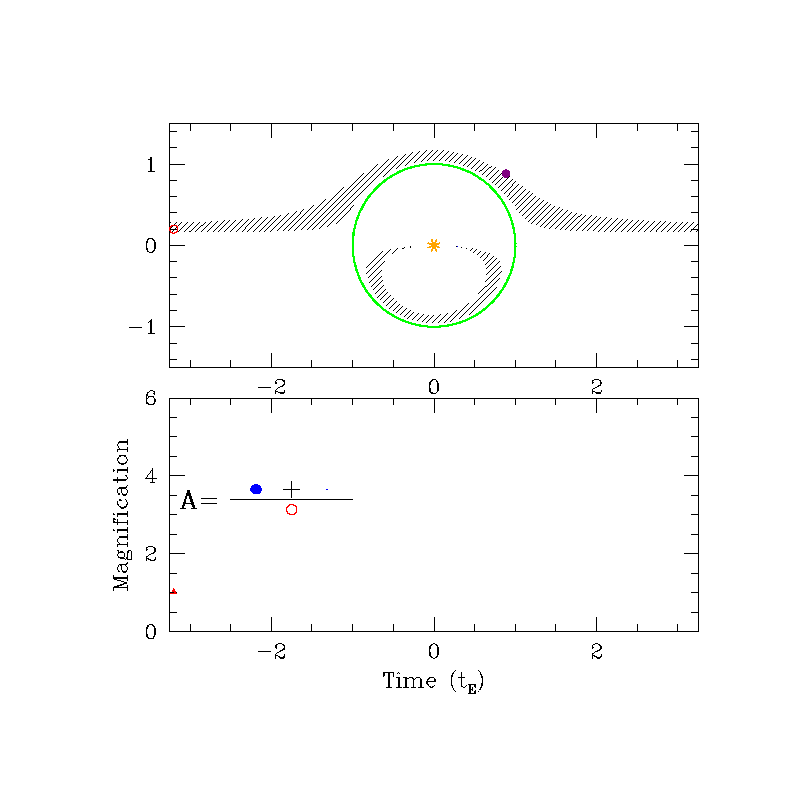Microlensing for planet-hunting
April 21st, 2009 at 10:29 pm (Astronomy, Planets)
Clever astronomers have come up with many different, creative ways to detect extrasolar planets orbiting around other stars. We’re up to 346 planets detected now, by a variety of different methods including transit detection, radial velocity analysis, precision astrometry, and direct imaging. At the Missions for Exoplanets meeting today, I learned about another method that relies on serendipity but, when it happens, provides inarguable evidence for a planet.
Gravitational microlensing refers to the brief magnification we observe when a dimmer, closer star passes between us and a brighter, distant star. Gravitational effects cause the distant star to temporarily become even brighter (because its light is being bent and focused towards us). If the closer star (the “lensing” star) also has one or more planets, then the resulting light curve gets an extra bump
from the planet’s “micro”-lensing effect.
Scott Gaudi of Ohio State University created this marvelous animation of microlensing in action, which also shows how it is detected. (I love the symbolic fraction!) The distant star is the red circle, the closer star is in orange, the distant star’s apparent position is in blue, and the closer star’s planet is the brown dot.

Maybe I should break down and get a telescope already.